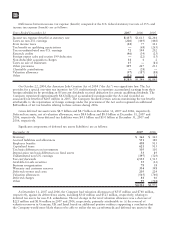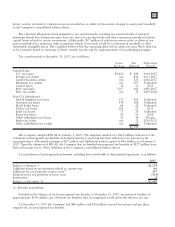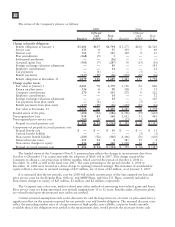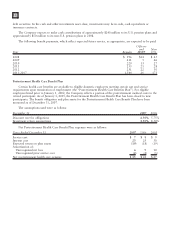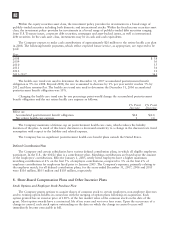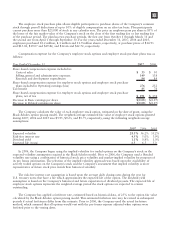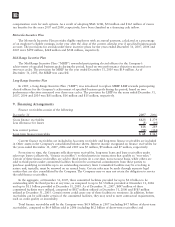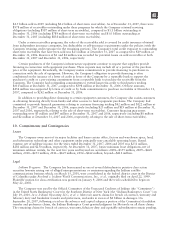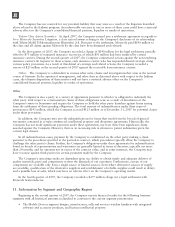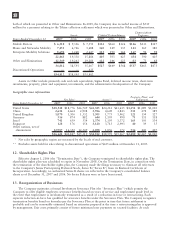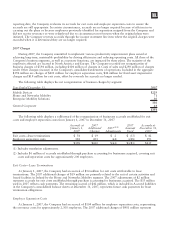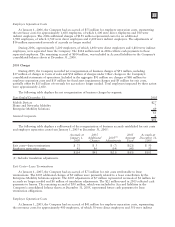Motorola 2007 Annual Report Download - page 113
Download and view the complete annual report
Please find page 113 of the 2007 Motorola annual report below. You can navigate through the pages in the report by either clicking on the pages listed below, or by using the keyword search tool below to find specific information within the annual report.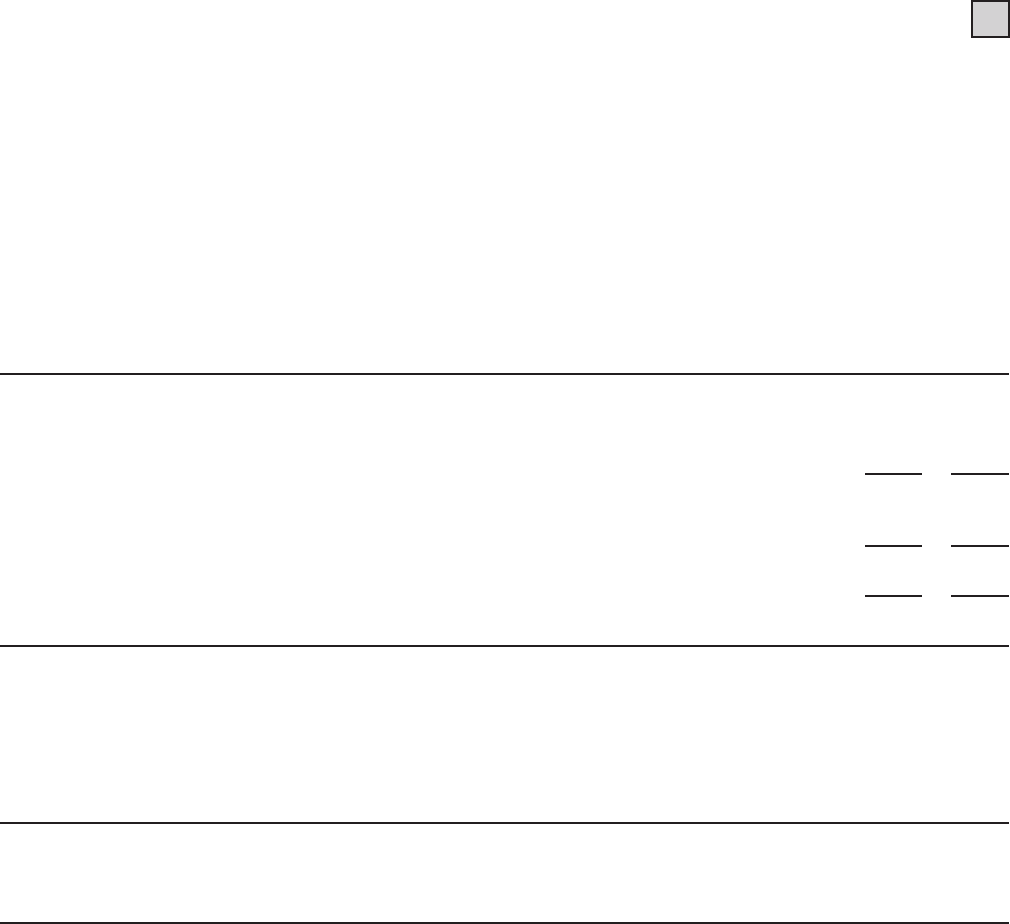
The employee stock purchase plan allows eligible participants to purchase shares of the Company’s common
stock through payroll deductions of up to 10% of eligible compensation on an after-tax basis. Plan participants
cannot purchase more than $25,000 of stock in any calendar year. The price an employee pays per share is 85% of
the lower of the fair market value of the Company’s stock on the close of the first trading day or last trading day
of the purchase period. The plan has two purchase periods, the first one from October 1 through March 31 and
the second one from April 1 through September 30. For the years ended December 31, 2007, 2006 and 2005,
employees purchased 10.2 million, 8.3 million and 11.9 million shares, respectively, at purchase prices of $14.93
and $15.02, $19.07 and $19.82, and $12.66 and $12.72, respectively.
Compensation expense for the Company’s employee stock options and employee stock purchase plans was as
follows:
Year Ended December 31 2007 2006
Share-based compensation expense included in:
Costs of sales $33 $30
Selling, general and administrative expenses 149 138
Research and development expenditures 94 84
Share-based compensation expense for employee stock options and employee stock purchase
plans included in Operating earnings (loss) 276 252
Tax benefit 85 78
Share-based compensation expense for employee stock options and employee stock purchase
plans, net of tax $ 191 $ 174
Decrease in Basic earnings per share $(0.08) $(0.07)
Decrease in Diluted earnings per share $(0.08) $(0.07)
The Company calculates the value of each employee stock option, estimated on the date of grant, using the
Black-Scholes option pricing model. The weighted-average estimated fair value of employee stock options granted
during 2007, 2006 and 2005 was $5.95, $9.23, and $5.75, respectively, using the following weighted-average
assumptions:
2007 2006 2005
Expected volatility 28.3% 36.2% 35.2%
Risk-free interest rate 4.5% 5.0% 3.9%
Dividend yield 1.1% 0.8% 1.0%
Expected life (years) 6.5 6.5 5.0
In 2006, the Company began using the implied volatility for traded options on the Company’s stock as the
expected volatility assumption required in the Black-Scholes model. Prior to 2006, the Company used a blended
volatility rate using a combination of historical stock price volatility and market-implied volatility for purposes of
its pro forma information. The selection of the implied volatility approach was based upon the availability of
actively traded options on the Company’s stock and the Company’s assessment that implied volatility is more
representative of future stock price trends than historical volatility.
The risk-free interest rate assumption is based upon the average daily closing rates during the year for
U.S. treasury notes that have a life which approximates the expected life of the option. The dividend yield
assumption is based on the Company’s historical and future expectation of dividend payouts. The expected life of
employee stock options represents the weighted-average period the stock options are expected to remain
outstanding.
The Company has applied a forfeiture rate, estimated based on historical data, of 25% to the option fair value
calculated by the Black-Scholes option pricing model. This estimated forfeiture rate may be revised in subsequent
periods if actual forfeitures differ from this estimate. Prior to 2006, the Company used the actual forfeiture
method, which assumed that all options would vest with the pro forma expense adjusted when options were
forfeited prior to the vesting dates.
105



